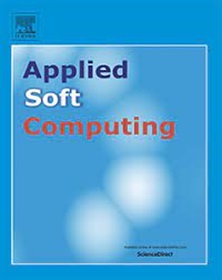基于小批量采样和深度度量学习的皮肤病变分类
IF 6.6
1区 计算机科学
Q1 COMPUTER SCIENCE, ARTIFICIAL INTELLIGENCE
引用次数: 0
摘要
最近,基于深度学习的皮肤病变图像分类备受关注。然而,将在一般计算机视觉任务中表现良好的方法直接应用于皮肤病变图像分类并不理想,因为皮肤病变图像数据集具有固有的特征,如类不平衡、类内变异性和类间相似性。为了同时解决这些挑战,我们提出了一种新的统一学习框架,称为mBSML,它集成了小批量采样和深度度量学习。在该框架中,小批量采样在每次迭代学习期间实时重新采样数据,而新的损失函数将基于小批量距离度量的损失与交叉熵损失相结合。通过对不平衡训练数据和平衡重采样数据的交替训练过程,mBSML不仅能从原始数据集中有效学习全局分布信息和局部相似度信息,还能从少数类中有效学习。在两个公开可用的数据集上进行的大量实验证明了mBSML对皮肤病变图像分类的有效性。本文章由计算机程序翻译,如有差异,请以英文原文为准。
Skin lesion classification with mini-batch sampling and deep metric learning
Skin lesion image classification based on deep learning has recently garnered significant attention. However, directly applying methods that perform well in general computer vision tasks to skin lesion image classification is not ideal, as skin lesion image datasets possess intrinsic characteristics, such as class imbalance, intra-class variability, and inter-class similarity. To tackle these challenges simultaneously, we propose a novel unified learning framework, named mBSML, which integrates mini-batch sampling and deep metric learning. In this framework, mini-batch sampling re-samples data in real-time during each iteration of learning, while a new loss function combines mini-batch distance metric-based loss with cross-entropy loss. Through the alternating training procedure on both imbalanced training data and balanced re-sampling data, mBSML effectively learns from global distribution information and local similarity information, not only from the original dataset but also from the minority classes. Extensive experiments conducted on two publicly available datasets demonstrate the effectiveness of mBSML for skin lesion image classification.
求助全文
通过发布文献求助,成功后即可免费获取论文全文。
去求助
来源期刊

Applied Soft Computing
工程技术-计算机:跨学科应用
CiteScore
15.80
自引率
6.90%
发文量
874
审稿时长
10.9 months
期刊介绍:
Applied Soft Computing is an international journal promoting an integrated view of soft computing to solve real life problems.The focus is to publish the highest quality research in application and convergence of the areas of Fuzzy Logic, Neural Networks, Evolutionary Computing, Rough Sets and other similar techniques to address real world complexities.
Applied Soft Computing is a rolling publication: articles are published as soon as the editor-in-chief has accepted them. Therefore, the web site will continuously be updated with new articles and the publication time will be short.
 求助内容:
求助内容: 应助结果提醒方式:
应助结果提醒方式:


